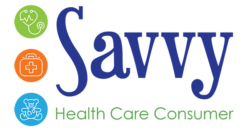Are you frustrated about not knowing what it cost for a procedure? Times are a changing. Health plan transparency helps consumers know the cost of a covered item or service BEFORE receiving care.
Beginning July 1, 2022, most group health plans, and issuers of group or individual health insurance will begin posting pricing information for covered items and services.
Health Plan Requirements
Starting July 1, 2022, health insurance plans are making pricing information available to the public. This will occur in three stages.
- Providing **machine-readable files (i.e., disks, cards, barcodes) files that contain sets of cost for items and services to include:
- In-Network Rate File which includes rates for all covered items and services between the plan or issuer and in-network providers.
- Allowed Amount File – allowed amounts for, and billed charges from, out-of-network providers.
**A machine-readable file is defined as a digital representation of data or information in a file that can be imported or read by a computer system for further processing without human intervention, while ensuring no semantic meaning is lost. These files are in the CMS defined format (JSON) and are not meant for a member-friendly search of rates, benefits, or cost sharing.
- Internet-Based Price Comparison Tool
- Allows an individual to receive an estimate of their cost-sharing responsibility for a specific item or service from a specific provider or providers.
- Up to 500 items and services
- Disclosure may also be on paper, upon request.
- Internet-Based Price Comparison Tool
- Allows an individual to receive an estimate of their cost-sharing responsibility for a specific item or service from a specific provider or providers.
- Up to ALL items and services
- Disclosure may also be on paper, upon request.
**Phases 2 and 3 go into effect in 2023 and 2024
Health insurance plans must post online and update them once a month. If plans are non-compliant, they could be fined up to $100 a day. From the image below plans are taking this mandate seriously.

What’s the Benefit to You?
It is important to note that this is not a tool where you can go onto say United Health Care’s website and price search. You will still need to either call or use your health insurance online portal where there may be options to price search.
Where it does benefit you is this pricing can be used by third parties like researchers and app developers who create solutions for you. For example, Fair Health Consumer, (a free tool for searching for the price of a procedure) can help make sure the pricing is more accurate. Today Fair Health Consumer relies on claims data provided from health insurance companies, which is not always reliable. Now they will have claims and the actual cost of services.
For App developers they can leverage this information to create APPS supporting price transparency. Example, creating an app to price shop for the best and most cost-effective location for an MRI.
Public Data That Works for You
Do you recall the days calling into a 1-800 number trying to get cost information? Did you ever get a bill and tried to figure out why you are charged so much and how you are going to pay for it? The information now belongs to the public. While it will take researchers and APP developers time to create tools that makes the data easily accessible to you, it is a start the right direction in having health insurance companies work with you in partnership for better health care options for all.
Resources:
CMS insurer price transparency rule has taken effect. Signs are good for compliance

